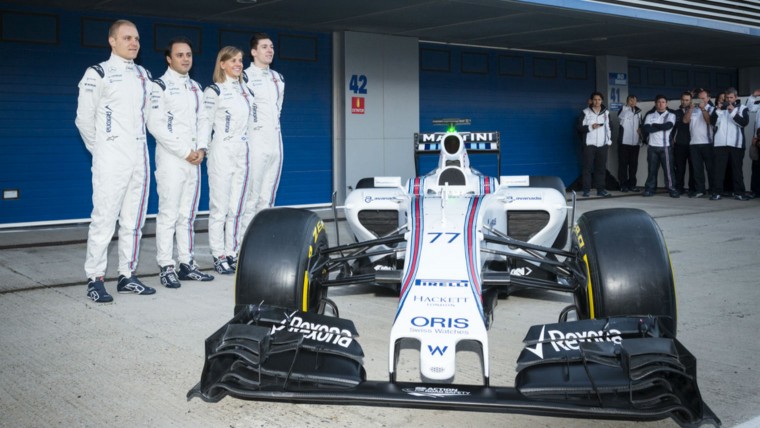It would be hard to argue that Formula 1 is not a male-dominated sport. In its 65-year history, 854 drivers have taken part in a grand-prix weekend and just six have been women. Only two of them have qualified and raced in a grand prix. The majority of team owners and personnel are male and the sport’s core fan-base comprises more men than women. F1 has traditionally been “a boy thing”.
Nevertheless, this is an attitude that is being frequently challenged in the modern era. In the past decade, there has been an influx of women into the paddock: journalists, engineers, general staff and even team principals. Maybe it’s no longer a man’s world.
One of the highest-profile women in F1 is Susie Wolff, test driver for the Williams team. At last year’s British Grand Prix she became the first woman in 22 years to take part in an F1 weekend when she drove in a practice session.
It was an important step, but Wolff sees herself as just one part of the female influx into F1. “We’re getting more and more opportunities,” she says. “There are more and more women working in the paddock which is giving others inspiration. I think the barriers are down now. People and women especially don’t see F1 as being such a male-dominated world.”
Formula 1 is changing in an organic way, no one is standing behind saying ‘you need more women’
Wolff is not alone. Williams’ deputy team principal is Claire Williams. At Sauber, Monisha Kaltenborn is the team principal, while Lotus has recently appointed Spain’s Carmen Jorda as its development driver.
As Wolff explains, the barriers to entry haven’t come down as a result of F1 saying there must be more women in the sport. “It’s changing in an organic way and that’s what pleases me, because no one is standing behind saying ‘you need more women’.” She adds: “These women are not here because someone decided we need more women in Formula 1. They’re here because they’re the best people for the job.”
In Wolff’s eyes, the rise in women working in F1 is also a reflection of changes in social attitudes. “I think the world we’re living in is changing,” she says. “Women are getting more and more opportunities, and that’s why more and more women are in the paddock. For the next generation, it’s completely normal to think that women should go out on the racetrack and do a good job.”
[embed_related]
She upheld this ideal for Williams in 2014. Her practice run at the British Grand Prix was cut short due to an engine failure, but her second outing in Germany two weeks later was very impressive. Her fastest lap was just 0.2 seconds slower than that of regular Williams driver, Felipe Massa, and seven others finished behind her in the final timesheets.
“Gender in that situation doesn’t mean anything,” says Wolff. “It’s what you bring to the table that is more important.” This performance was a bold statement to those who believe women cannot compete in F1.
Thanks to the likes of Wolff, young girls are now growing up with aspirations to race in F1. The sport is even becoming technically more suited to female drivers. “The way the sport is developing, it’s in our favour as women,” says Wolff. “The drivers can’t be big and have bulk because the cockpit is too tight. Weight is a key issue.”

Susie Wolff became the first woman in 22 years to take part in an F1 weekend
This is just the start for women in F1, though. “If there are 500 boys trying to get to F1 and only five girls, the chances are you’re going to have more boys and fewer girls,” she says. If the percentage of girls aiming towards a career in the sport increases, so will the number of women who actually make it.
Without role models such as Wolff succeeding in the traditional male environment, real change would be impossible. “I think for us it’s just about having this positive voice that says this isn’t just a man’s world,” she says. “We’re here, and it’s about building that network where actually women see that it’s possible and do-able. I already get really positive messages from little girls dressed in race suits saying they’re going to school as Susie Wolff.”
Clearly, her achievements are inspiring future generations and ensuring F1 will continue to welcome even greater numbers of women into the paddock for years to come.



